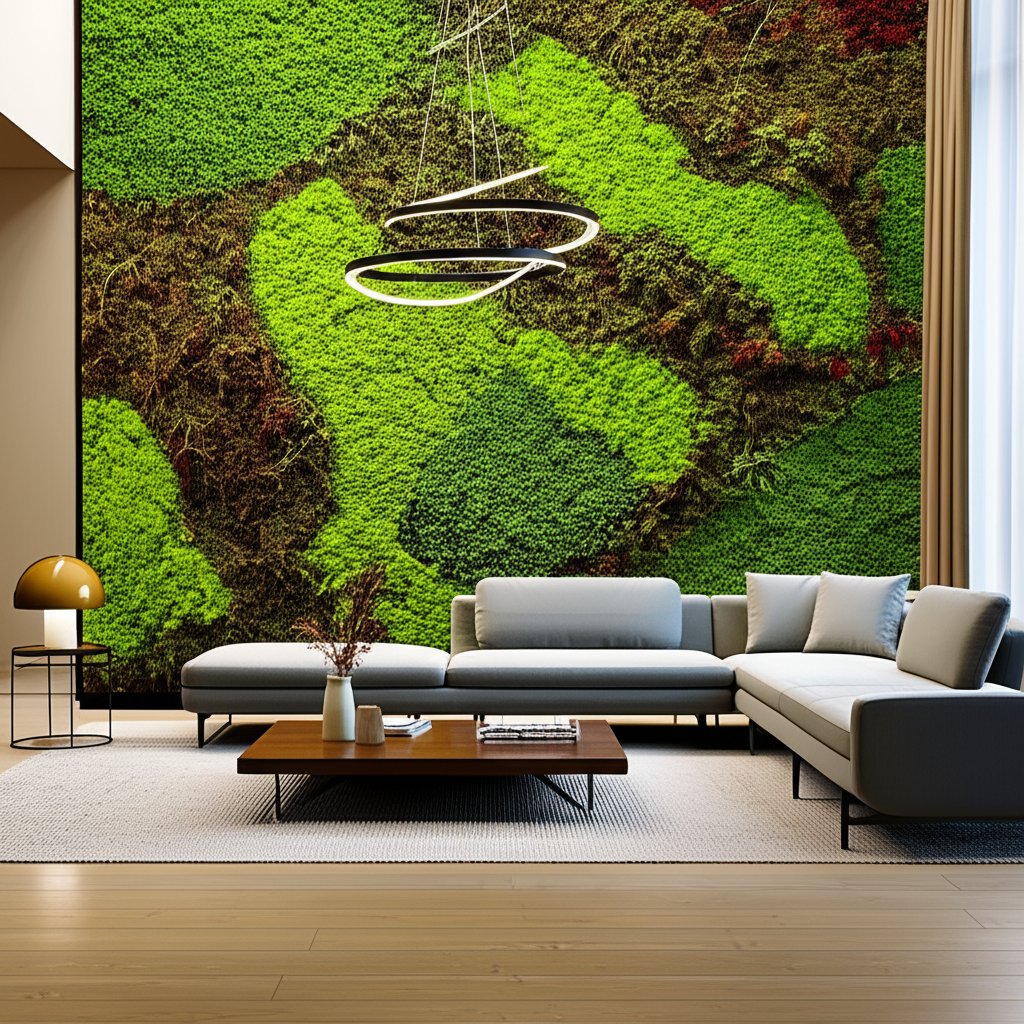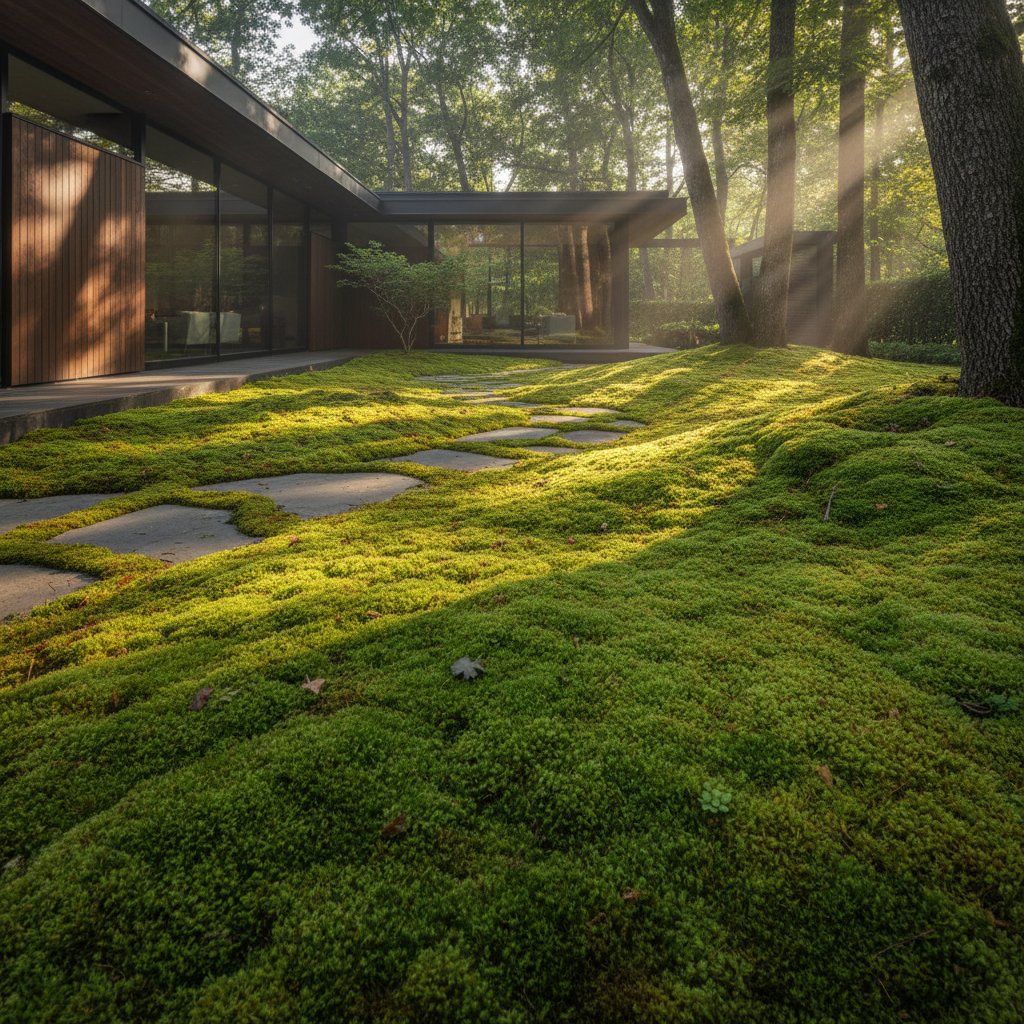Moss Living Walls: 2025's Biodiverse Hardscape Trend
Homeowners often encounter outdoor spaces that appear stark or overly rigid. A bare wall or fence can dominate a garden, creating a sense of disconnection from nature. Moss living walls address this by introducing organic texture and serenity, fostering a profound link to the natural world that enhances modern landscapes.
These installations represent a rising trend in outdoor design for 2025. They combine artistic expression, ecological function, and effortless upkeep, forming a verdant layer that flourishes in conditions unsuitable for conventional plants. For gardens lacking vitality, moss living walls provide an effective means to introduce biodiversity and equilibrium.
Why Moss Walls Suit Modern Landscapes
Moss living walls align with the increasing emphasis on eco-conscious and ecologically rich designs. Beyond visual enhancement, they regulate ambient moisture, purify surrounding air, and cultivate niches for insects and microbes that bolster overall ecosystem stability.
Individuals seeking reduced upkeep alongside aesthetic appeal find moss walls ideal. These features require no pruning, weeding, or nutrient supplements, while inherently deterring common pests. Their plush contours can revitalize retaining structures, privacy screens, or shaded barriers, imbuing them with energy and depth.
On a deeper level, moss walls evoke enduring natural motifs, such as dew-kissed woodlands or mist-shrouded rocks. Incorporating one elevates compact areas into tranquil retreats, promoting emotional well-being through subtle, immersive beauty.
Planning Your Moss Wall Design
With site analysis complete, shift to design formulation, bridging vision with feasibility. Focus on structural integrity and aesthetic harmony during this stage.
Select Moss Varieties
Moss types vary in form and palette, influencing the wall's character. Sheet moss yields uniform, velvety expanses for seamless coverage. Cushion moss forms rounded tufts, introducing relief and volume. Fern moss offers lacy fronds that glisten with condensation. Combining species yields dynamic patterns, mimicking wild terrains for added intrigue.
Choose the Support System
For direct adhesion, verify substrate compatibility with ongoing dampness. Modular alternatives employ framed panels backed by retentive media like sphagnum or coir. Secure with breathable netting or cloth to promote rooting while permitting ventilation.
Harmonize with Hardscape Elements
Pair moss with gravel walks, cascades, or lumber features for cohesive impact. Consider textural interplay: vivid moss against somber slate generates drama, while interstitial growth in flagstones eases boundaries. Integrate thoughtfully to embed the wall within the broader composition.
Installing Your Moss Wall
Installation unfolds methodically, emphasizing precision over exertion. Approach the task with care to secure enduring results.
Prepare the Surface
Clear the area of grime and fragments using mild methods, eschewing abrasives. Lightly hydrate arid substrates prior to application; this initial moisture aids initial bonding.
Attach the Moss
Employ one of two primary techniques. Direct placement entails affixing moss clumps or sheets to the base, stabilized by wire mesh or organic ties until integration occurs. The slurry technique blends pulverized moss with water and a yogurt-based adhesive, then applies via brushing or misting to encourage spore germination.
Direct methods yield prompt coverage, whereas slurries foster organic progression. Select based on desired speed and subtlety.
Establish Initial Care
Apply fine mists several times weekly in the establishment phase to sustain even dampness. As adhesion strengthens, taper frequency. Maintain ambient humidity without excess, steering clear of forceful sprays that disrupt settling.
Fostering Biodiversity with Moss Walls
Moss living walls extend beyond ornamentation to nurture ecological vitality. Condensed water droplets harbor microfauna, drawing pollinators and predators that maintain garden equilibrium.
Promote richness by forgoing synthetic treatments in proximity. Permit natural patina development; emergent lichens or algae signal thriving conditions. Such walls emulate self-sustaining glades, evolving through seasonal cycles.
Integrating Moss Walls into Established Gardens
Moss walls enhance when woven into existing plantings, amplifying thematic unity.
Match Complementary Foliage
Associate with moisture-tolerant companions like ferns, astilbes, or heucheras. Shared affinities for shade and hydration yield serene assemblages. Moss juxtaposed with broad hosta foliage or fern tendrils evokes woodland poise.
Amplify Water Elements
Position near bubblers, basins, or rivulets to leverage vapor for lushness. Verdant reflections in pools deepen spatial illusion, rendering urban plots akin to secluded groves.
Unify with Structural Materials
Link to boulder arrangements or arboreal furnishings by permitting marginal creep. This binding softens contours, imparting maturity and cohesion across the site.
Maintaining Moss Wall Vitality
Though undemanding, moss walls benefit from routine oversight to preserve luster.
Track Hydration
Inspect periodically; desiccated or faded sections indicate hydration needs. Supplement with gentle mists during arid phases, relaxing during precipitation.
Perform Light Cleaning
Remove accumulations with a pliant tool or diluted rinse. Refrain from high-pressure applications that compromise hold.
Control Expansion
Prune encroaching growth with fine cutters, redirecting clippings to sparse regions for propagation.
Adapt to Seasons
Moss adjusts inherently to climatic shifts, intensifying in warmth or subdued in chill. Embrace these fluctuations as authentic traits, avoiding interventions like amendments.
Enduring Advantages of Moss Walls
Moss installations yield practical ecological gains. They moderate thermal extremes, cooling in heat and conserving warmth against frost. Acoustic absorption further calms ambient noise, elevating leisure quality.
Their soil-free nature optimizes vertical real estate, ideal for constrained or city plots. Each verdant panel advances air quality and localized climate moderation, embodying resourceful greening.
Observing Your Garden's Evolution
As moss establishes, it alters spatial dynamics with responsive vibrancy. Post-shower depths yield to dawn's glow, capturing atmospheric essence in unique ways.
Sustain this dynamism by viewing the wall as an integral landscape element. Regular scrutiny reveals responses to environmental cues, refining stewardship practices. Consider gradual enhancements, such as introducing compatible epiphytes, or allow undisturbed maturation for sustained tranquility.



